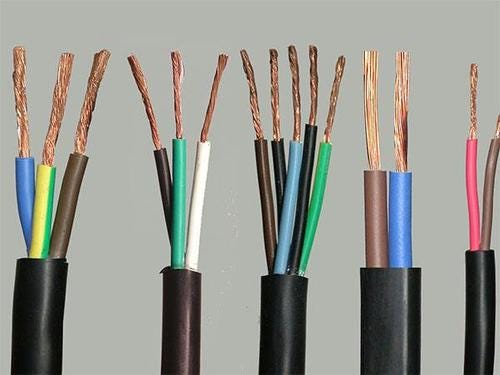The new material we are going to talk about this time may bring new changes to the material field of aluminum alloy cables. It is magic angle graphene. Some people say, isn’t it just graphene? I already knew it.
In fact, it is really not. The magic angle graphene we are going to talk about is not the graphene you understand. Different from graphene, magic angle graphene has a feature, that is, insulation and superconductivity will appear on the same material. We don’t know what this material can do in the field of cables, but it may open a sea of unknowns to the cable industry.

Let’s get to know it now.
The “Magic Horn” is indeed like a magical angle. Graphene is originally a material with better conductivity than metal, but when two layers of graphene are stacked together, at a special angle, they suddenly become insulators.
According to our general understanding, insulators and superconductors are two extreme materials. The resistance of the insulator is very high, while the resistance of the superconductor is zero. However, when the two layers of graphene are at a special angle, they can easily bridge the gap between these two extremes. You can imagine that one day, the insulation of the cable you make is a conductor, and the conductor is also insulation, and you can change it at will. Anyone who makes materials knows that it takes time and effort to find new materials with certain characteristics. Because there is almost only one way to do this work, which is to keep sifting through a large number of materials. Whether you can find it is almost pure luck.
But the study of magic angle graphene has opened up new ideas for materials science. It makes scientists realize that materials science can accurately predict the performance of materials in advance and reduce a lot of work. Even materials science can construct new materials based on the underlying logic of material properties.

In early May 2020, Chinese young scientist Cao Yuan published two articles in the same issue of Nature, introducing some new discoveries of his team on “Magic Angle Graphene”.
To talk about this new hairstyle, we have to start with graphene. Graphene is a material with a thickness of only one carbon atom. More specifically, the carbon atoms will first form a hexagonal unit, and then spread out on the plane like a tile. If you compare it, it looks like a mosquito net. Common mosquito nets are covered with hexagonal holes, and each hole is like a unit of six carbon atoms in graphene.
If we randomly stack two layers of mosquito nets together, it is difficult to completely overlap the hexagonal holes, and there will always be a certain angle of misalignment. For graphene stacked in two layers, this angle will bring about a surprising change: at a special angle, graphene that has better conductivity than metal will suddenly become an insulator.
This special angle is the “magic angle”. When two or more layers of graphene are stacked at this angle, it is called “magic angle graphene.”
In fact, as early as 2011, some scientists discovered through theoretical predictions that when the angle between two layers of graphene is at a certain angle, the electrical properties of graphene will suddenly change. But at the time, there was only theory, no experiments.
In 2018, experiments appeared. The Pablo Jarillo-Herrero team of the Massachusetts Institute of Technology in the United States published a paper in the journal “Nature” and used experiments to prove that this prediction was valid. Chinese scientist Cao Yuan was the first author.
They twisted the stacked graphene at a very low temperature and found that when the angle between the two graphene layers is 1.08 degrees, there will be a sudden change in prediction, and the originally conductive graphene will suddenly become Insulator.
What is even more amazing is that as long as a small electric field is applied, the insulator will turn into a superconductor. This experimental result exceeds the original theoretical prediction.
In May 2020, Cao Yuan’s team made some new discoveries.
In one of his papers, it can be seen that on the original basis, they have studied three different angles of double-layer graphene, the three angles are 0.84 degrees, 1.09 degrees and 1.23 degrees.
After studying double-layer graphene stacked at these angles, Cao Yuan’s team came to an important conclusion. They revealed that magic-angle graphene is “tunable.” This is a proper term in a subject, but don’t worry, it’s not hard to understand.
For example, the voice-activated lights in the corridor will light up when there is a sound. But in the beginning, no one knew the connection between sound and light. Cao Yuan’s work in 2018 is like discovering a phenomenon, that is, shouting at the voice-activated light from a specific angle, and the voice-activated light can be switched between “on” and “off” freely.
Of course, there is no such phenomenon in real life, but it happens in the world of graphene, so it is very eye-catching.
In his work in 2020, Cao Yuan further discovered that the lighting is very sensitive to angle changes still near this angle. You still shout, but when you shook your head slightly to the left or right, the light can not only switch between “on” and “off,” it can also change into various colors. This is the so-called “tunability”.
Using this “tunability”, maybe one day our AAAC cables will become “voice-activated”.
